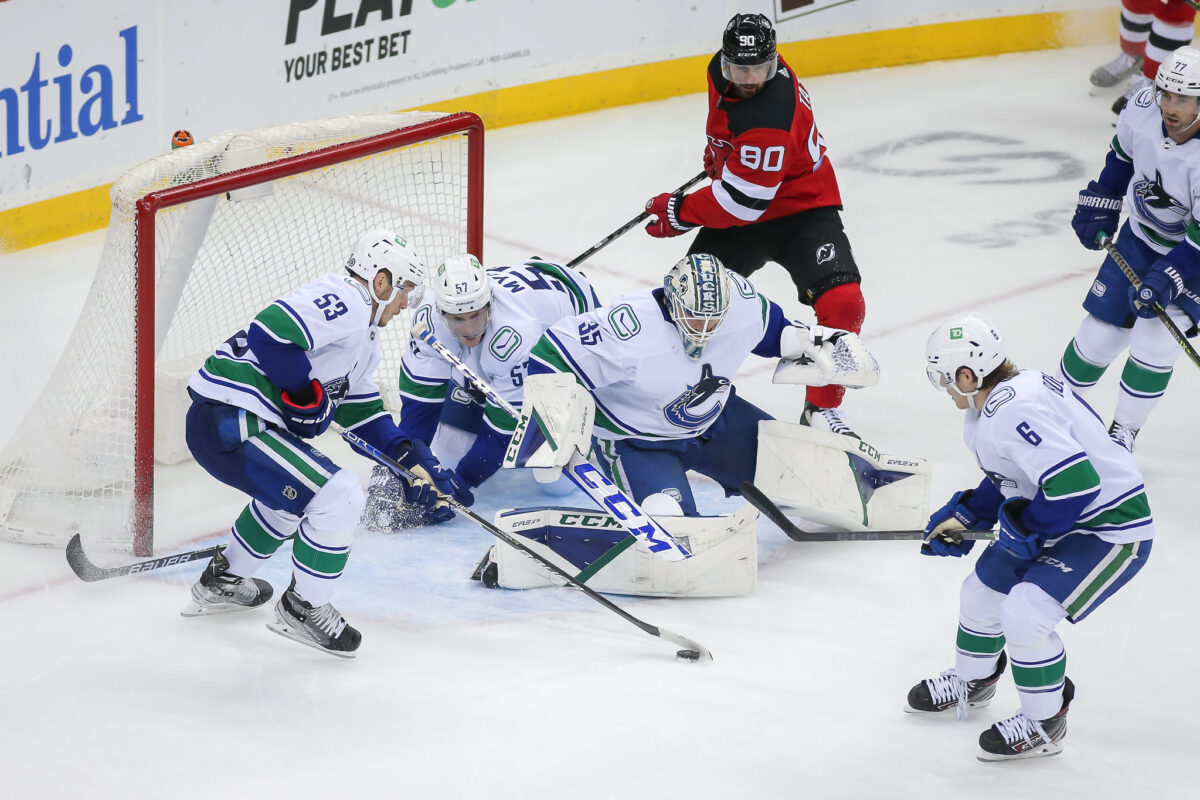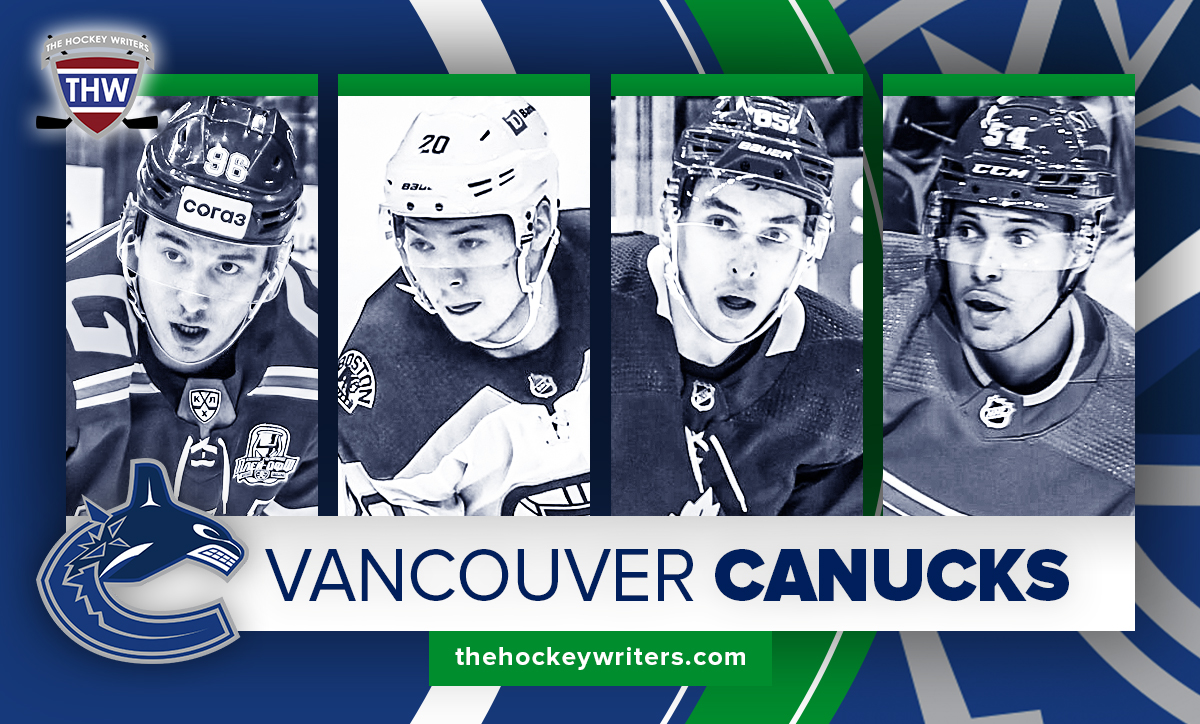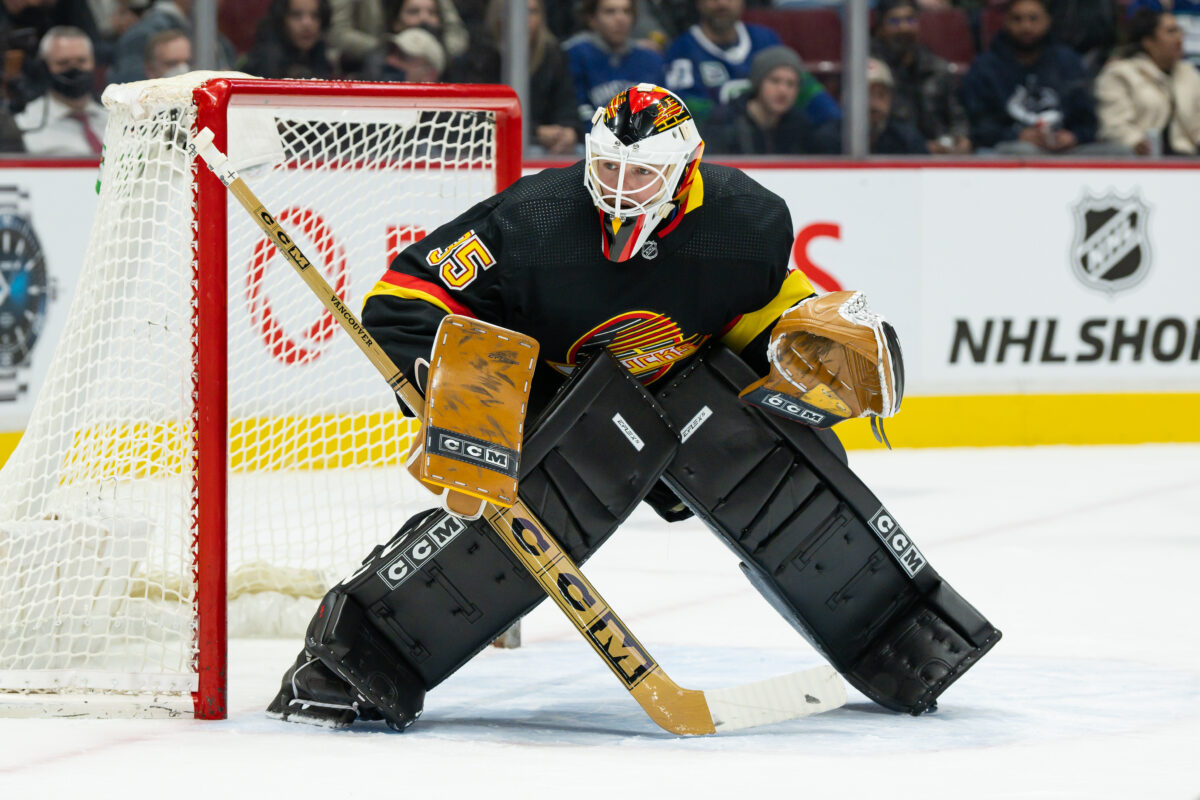The Vancouver Canucks are definitely an improved team on paper going into the 2022-23 season. But as the old adage goes, hockey is not played on paper. As such, fans and media alike won’t know if they are truly a better squad until the puck drops for the first game of the regular season in October.
Related: 3 Reasons the Canucks Will Make the Playoffs in 2022-23
Last season, new head coach Bruce Boudreau reignited Vancouver’s passion for their team and started making believers out of everyone that the Canucks could in fact be closer to a playoff team than fodder for the draft lottery (from ‘It’s about the players’: new coach Boudreau a welcome refresh for Vancouver Canucks’, Toronto Star, 1/10/22). While they weren’t invited to the dance, they were playing meaningful games in April and that’s about all you can ask for from a team that is not entrenched in a rebuild. Having said that, they wouldn’t have been in that position if certain parts of their game were better at the beginning of the year, and even during the Boudreau era that started at the beginning of December.

With that, let’s take a look at three issues that will need to be addressed if the Canucks hope to be playing not just meaningful regular season games in April, but getting ready for their first postseason date in Vancouver since April 23, 2015. Coincidentally, that was also the last time they won a playoff game within the confines of Rogers Arena, as they came away with a 2-1 victory over the Calgary Flames forcing a Game 6 – a game they ultimately lost 7-4.
1. Bad Penalty Killing
Yes, the Canucks looked better on the penalty kill after Boudreau took over, but they still were tied for 31st in the NHL – even when you eliminate the games under Travis Green. That’s just not good enough if they are hoping to not only make the playoffs in 2023 but have a prolonged stay there. With the additions of Ilya Mikheyev, Curtis Lazar and Dakota Joshua, they should be better, as all of them bring speed, grit and most of all, someone other than Horvat or J.T. Miller to win faceoffs. In fact, if the aforementioned trio can force Miller off the penalty kill, then that’s even better.

However, if the Canucks’ system itself is flawed, then no amount of good penalty killers will change how it performs. The best penalty-killing units are aggressive, but not too aggressive that they give up prime chances. They pressure the puck carriers at every turn and are never passive by just standing in their box and waving their sticks around. They also block shots, but again, not too many because ultimately, they are not giving the opposition enough time to set up a high-danger scoring chance – or a shot for that matter. Unfortunately, for the units last year a lot of that rarely happened, and the result was a penalty kill that finished tied with the Seattle Kraken for 31st in the NHL just ahead of the Arizona Coyotes.
Related: Canucks Season Predictions for New Additions
If the Canucks can somehow manage to consistently employ all of those things above on their penalty kill this season, then they should re-emerge as a top-10 team in that respect. If they don’t, then they will be struggling to stay afloat in the playoff race once again.
2. Allowing Too Many Shots & High-Danger Chances
To go along with the horrible penalty kill, the Canucks gave up way too many shots and high-danger chances last season. While they finished as one of the best defensive teams in the NHL when it came to goals against, they still had problems with that particular area of their game. The reason why they didn’t up a lot of goals was one man, and one man alone, Thatcher Demko. He stopped the hemorrhaging and made the team look better than they were. In fact, if not for him, I would argue that they would have finished closer to the Coyotes at the bottom of the standings than the Nashville Predators in the second wild card spot. That’s how many of the team’s flaws he covered up.
If you want proof, just look at some of Demko’s underlying 5-on-5 statistics from 2021-22:
| High Danger Shots Against | High Danger Chances Against | High Danger Saves | Rush Attempts Against | |
|---|---|---|---|---|
| Thatcher Demko | 420 (2nd) | 574 (3rd) | 358 (2nd) | 90 (4th) |
That’s a lot of high-danger shots, chances and rush attempts against. What’s even more impressive is that Demko stopped 85.2 percent of them. Talk about keeping your team in games they had no business being in. His basic numbers of goals-against average (GAA), save percentage (SV%) and shutouts were nothing to write home about, but to put up a decent 2.72 GAA and .915 SV% all while facing the third-most high-danger chances in the NHL is still pretty impressive in my books.

All of this to say that the Canucks need to be a million percent better in front of Demko (or Spencer Martin) this season to make the playoffs. He can’t be faced with that many high-pressure situations every night, even though it seems like he is able to handle them. It’s just not a good game plan for a team with aspirations of being a perennial playoff team in the future.
3. Failing to Start Games On Time & Giving Up the First Goal
This issue has plagued Canucks teams all the way back to the days of Willie Desjardins. They just can’t seem to start games on time and dictate the pace from the drop of the puck. Even with Boudreau, they still struggled in first periods, finishing the season in the bottom half of the league when it came to goals for. Their second and third periods were in the middle of the pack though, which means they woke up eventually. However, that’s not a sustainable recipe for success – as they soon found out by missing the playoffs.

The other thing the Canucks need to do is simply score first and play with the lead – another thing that has gone on for years. Luckily, they were a little better with Boudreau at the helm than Green, although it was a very small sample size. After the former took over from the latter, they scored first in 30 of the 56 games that they played; which translated to 53 percent of the time. Before that, they had only scored first in nine of the 26 games under Green; translating to only 34 percent. So, definitely a step in the right direction. If they can do that more frequently and increase the percentage to the high 60s, then that would help Boudreau’s squad dictate the game more often rather than chasing it from behind.
Related: Canucks Season Preview
Canucks Nation has a lot of hope and optimism going into the 2022-23 season. A full campaign of Boudreau’s exciting system, three centermen capable of scoring 70 or more points, a deep and dynamic top-nine and of course, new faces that might finally push the Canucks to the playoffs. Except, the road will be a lot less rocky if they can fix the above issues that cost them that very thing last season.
All stats were from NHL.com and Natural Stat Trick